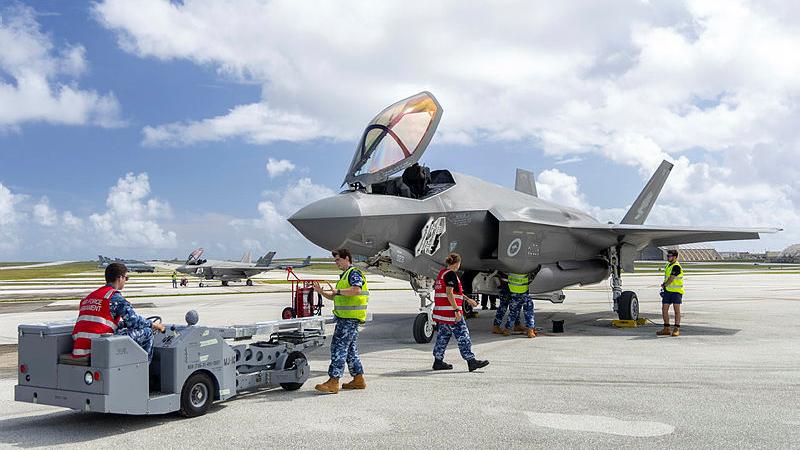The pandemic made one thing more than obvious: even in developed countries, supermarket shelves can sit empty and supply chains cannot be taken for granted. Certainly, climate change is a looming food security threat, but another real and growing problem is farmhand labour shortages.
One Northern Territory mango farmer quoted in the Australian Financial Review said that for the 2022 season, there were 300 mango pickers across all farms. What was needed was 2500. Similar stories are told in every part of the farming sector.
These are issues that can affect the availability and price of farmed goods, the economic health of regional communities, and the foundation of an export industry that in the next two years could be worth about $65 billion.
Farmers and governments are wrestling with the problem, but an important advancement is emerging in robotics and the world-leading work of Professor Salah Sukkarieh (BE ’97, PhD ’00). “When we started about 20 years ago, there were a couple of overseas groups working in this area, but they had a more commercial mindset,” says Salah, who has an easy-going manner but is precise with his information. “They were thinking about how to miniaturise tractors. We asked ourselves a different question.

Robots can work 24 hours a day, helping with the shortage of farming labour.
“We asked, ‘what are the novel technologies that could fast-track robotics into the hands of farmers, that would make robotics useful and affordable?'” At the time, drones were gaining a profile, but they weren’t in any way off-the-shelf. So, Salah and his team built their own drones from scratch, then taught themselves how to fly them safely, before creating algorithms that would give the drones functionality that might help farmers.
“Given what was seen from the air, the farmers understandably wanted to know what could happen on the ground. This led me to ground robotics.” As a boy, Salah, now a world-recognised robotics expert, loved machines and dreamed of being a Formula 1 motor mechanic or NASA engineer.
“The research began with piecing a robot with a bunch of sensors and seeing what might happen, then asking what we could do to make it better.”
Today, and as a result of endless tinkering, building, talking, and multidisciplinary problem solving, Salah’s team has produced an array of farm robotics with names like RIPPA, the Digital Farmhand, and the Swagbot (which was developed with the help of an anonymous gift, and will one day quite soon be able to herd cattle).
In effect, all these machines are part of the relatively new field of Digital Agriculture, which aims to enhance agricultural sustainability and productivity through real-time modelling of soil, water, and crop health.
Much of the work is centred at the University’s Australian Centre of Field Robotics (ACFR) where Salah was a director from 2007 to 2018. Starting with a team of three PhD students, it now has around 130 people working in the lab and on sites – including academics, postdocs, mechatronic and software engineers, PhD and undergraduate students, and project managers.

The robots are sophisticated enough to selectively weed and fertilise crops.
The robots they have created are powered by artificial intelligence. They can work 24 hours a day, reducing the need for fossil fuels by running on electricity and solar. As they lightly move up and down the rows of crops (the weight of old-technology tractors caused problems with soil compaction), they can spot weeds and emerging infections while collecting data about soil condition and crop ripeness.
A future robot could even identify and pick the ripe fruit for those Northern Territory mango farmers. An enormous side benefit is a significant reduction in the use of expensive chemicals as the robots can spray an individual weed or pull it out – meaning a lot less blanket spraying. The same goes for harmful insects and diseases.
Keeping chemicals out of the environment very much aligns with Salah’s firmly held commitment to sustainability and other positive environmental outcomes.
“I was born in Australia, but my dad’s dad and his dad were Bedouins, nomadic herdsmen, in the Arabian desert. My mum’s parents, and beyond that, were horticulturists. So ideas around the land were always there for me,” he says. “Then, when my kids came along, it kind of upped the ante and it became more like, ‘what can I do to help with this bigger picture?'”
He also wants farm robotics to be a tide that lifts all boats. “Farmers are using robots because they can’t find field labour. But robots are creating the need for people who are across technology and software. This will create new jobs and shape new careers in regional areas.”
When you work in robotics technology, the future is expensive. Salah and his team have had a number of highly creative and successful industry partnerships, but he particularly values the philanthropy of individual donors.
“Individual donors tend to have broader goals where we can think more holistically. Like, how can the technology help small‑hold farmers in communities around the world?” he says.
Salah’s work has opened discussions for potential collaborative work to be done with the Gamilaraay community in Narrabri. While these discussions are ongoing, an additional gift from Christopher Vonwiller AM (BSc ’63, BE(Hons) ’65, HonDEng ’21) and Dr Julia Vonwiller AM (HonDEng ’21) has allowed the system and computing element to continue advancing. As Australian developers of sophisticated artificial intelligence systems, they were particularly interested in the concept of the ‘digital twin’, where an entire farm is recreated inside a computer, with information constantly updated by on-farm robots and sensors.
The Vonwillers’ gift will help perfect the technology, including above-and below-ground sensors that feed data into the twin.

“That a farmer can input changes into the digital twin and see how that would change things on his actual farm is pretty incredible,” says Chris. “It would dramatically streamline farm production and it has so much commercial potential.”
Julia agrees, “The world is facing some serious food security challenges right now, and hearing about this technology we thought it could make a real difference globally, especially with Salah wanting the technologies to be widely accessible.”
As he works on today’s robots, Salah is, of course, working on the robotic technologies of tomorrow. “The question is, how do we increase the intelligence of the robotic systems, so they aren’t just action bots blindly collecting data? How do we get them to embody more of the mission objective, as a human does, so they change their focus in response to new information as they find it?”
This idea is currently just out of reach, though very much in the line of sight. But every advance made by Salah and his team would very likely be transformative in areas beyond agriculture: in space exploration, mining, aviation, environmental management, firefighting, search and rescue, and medicine.
“I’ve undertaken research at the University for over 20 years with increasingly interesting projects,” says Salah. “But to me, it’s always been about what is the greatest possible impact we can have.”
Written by George Dodd for the . Photography supplied and by Stefanie Zingsheim.








